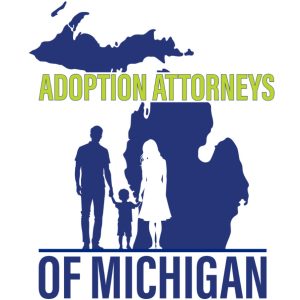ADOPTION SERVICES

DIRECT PLACEMENT ADOPTION SERVICES IN MICHIGAN
A direct placement adoption is when a legal parent transfers physical custody of his/her child to prospective adoptive parent(s) for the purpose of adoption. Direct placement adoptions are more complex than other adoption types. I will point out some important aspects of a direct placement adoption process.
PROSPECTIVE ADOPTIVE PARENT(S)
Must have a family assessment also referred to as a home study completed by a licensed child placing agency and updated on a yearly basis. The family assessment evaluates how a child(ren) may fit into your family, and what type of child(ren) might do best in your home. The family assessment consists of a complete history and evaluation of prospective adoptive parent(s) current family life, past experiences, parenting experiences, and capacity to parent an adoptive child. The family assessment includes but is not limited to:
- Medical histories and physicals are completed on everyone residing in the home.
- Prospective adoptive parent(s) must provide financial information to establish his/her/their ability to support a child.
- Criminal background checks are conducted on all adults residing in the home.
- References from unrelated individuals who can share his/her knowledge about prospective adoptive parent(s) experience with children, stability of household, etc.
- Dependent upon circumstances, professional references may be required from teacher(s), doctor(s), etc.
BIRTH PARENT(S)
Select the prospective adoptive parent(s) for their child. Usually, the birth mother selects the prospective adoptive parent(s) to adopt her child. A birth mother may meet and select the prospective adoptive parent(s) during her pregnancy or after her child is born. During meeting(s) and selection, non-identifying Information is shared amongst the parties while identifying information is shared only if the parties agree.
TEMPORARY PLACEMENT DOCUMENTATION
At the hospital, after the birth of the child and when the birth mother is feeling well enough and able to execute the legal documents, she and the prospective adoptive parent(s) execute temporary placement documents. The documents legally transfer physical custody of the child from the birth mother to the prospective adoptive parent(s) and give them authority to care for the infant. The birth mother remains the parent of the child and may request her child be returned to her. The prospective adoptive parent(s) acknowledge that if the mother asks for the return of her child, prospective adoptive parent(s) must return the child. Direct placement adoptions are referred to as “at risk” adoptions because birth parent(s) may physically place their child with a prospective adoptive parent(s), but may change their mind and request return of their child. Although this infrequently occurs when compared to the overall number of direct placement adoption cases, it may be frustrating and disappointing for the prospective adoptive parent(s). The risk of a birth mother changing her mind, elevates the emotions in this type of adoption.
CHILDREN’S PROTECTIVE SERVICES (CPS) INVOLVEMENT
CPS may get involved after the birth of a child due to a birth mother’s prior CPS history or if the child tests positive for a controlled substance, etc. CPS will investigate the case and decide whether to file a petition alleging child abuse and/or neglect or allow the prospective adoptive parent(s) to take the infant home as part of the adoption process. If CPS allows the adoption to move forward it may keep a case open pending the termination of the birth parents’ parental rights. If a birth mother under investigation by CPS requests return of her child from the prospective adoptive parent(s), CPS may immediately file a petition alleging child abuse and/or neglect against the mother.
FREEING UP A CHILD FOR ADOPTION
In order to free the child for adoption, the parental rights of the child’s parents’ need to be terminated unless one or both of the parent’s is/are deceased. Legal parents may voluntarily consent to their child being adopted in-person or via an out-of-court consent. During an in-person consent hearing, the parents execute consent documents in the presence of either a judge or referee. If the judge or referee is satisfied that the parents are knowingly and voluntarily consenting to the adoption, then an order terminating the parents’ parental rights is executed by the judge presiding over the adoption case.
Legal parents may elect to engage in an out-of-court consent, reserved for direct placement adoptions only. Legal parents may hire an attorney that will work with a social worker from a child placing agency to complete the out-of-court consent. The parent will have to execute the out-of-court consent documents in the presence of his/her attorney and witnessed by a social worker from a child placing agency. The parents have a period of five business days after the execution of the consent in which to ask for the revocation of their consent. After the allotted time expires, a judge may execute an order terminating the parents’ parental rights based upon their execution of the out-of-court consent.
The judge presiding over the adoption case also executes an order formally placing the child in the care and custody of the prospective adoptive parent(s) for a supervision period. The order placing requires the child placing agency involved in the case to periodically investigate and provide a written report as to the health of the child, relationship between the child and prospective adoptive parent(s), and progress of the adoption.
CHILD PLACING AGENCY ROLE
Initially a licensed child placing agency will conduct a family assessment otherwise known as a home study of the prospective adoptive parent(s). The child placing agency may assist with an out-court-consent by the parents. During the supervision period, the child placing agency will be responsible for reporting to the court about the health of the child and relationship with the prospective adoptive parent(s).
LEGAL EFFECT OF A DIRECT PLACEMENT ADOPTION
After the entry of an order finalizing a Michigan direct placement adoption, the adoptive parent(s) become the legal parent(s) of the child as though the child had been born to the adoptive parent(s). The relationship is now one recognized in the eyes of the law. As to inheritance rights, the child is no longer an heir at law of a person who was his/her parent(s) prior to the entry of the adoption or the lineal or collateral kindred of that person, except for a right, title, or interest that has vested before entry of the final order of adoption and is not divested by that order. MCL 710.60(2).
THE ADOPTIVE PARENT(S) MAY CHANGE AN ADOPTEE’S NAME
Adoptive parent(s) may elect to change the child’s name as part of the direct placement adoption. If the child’s name is being changed, after the adoption is finalized, the child will be known and called by his/her new name. MCL 710.60(1)
A NEW BIRTH CERTIFICATE MAY BE CREATED
Adoptive parent(s) may elect to have a new birth record created as a part of the direct placement adoption. If they elect to do so, the child’s original birth certificate is sealed and replaced by the new birth record recognizing the adoptive parent(s) as the child’s parent(s). As a part of the adoption, the parties may request a certified copy of the new birth record created at a cost of $50 payable to the state of Michigan. The cost for the new birth record and necessary documentation slightly varies if the child was born outside of the state of Michigan. The child’s birth state is responsible for sealing the former birth record and creating a new one.
OUR LAW FIRM
- Will explain the process step by step.
- Will prepare all legal documents.
- Will go to the hospital for the execution of the temporary placement documents for placement of the child after birth with the prospective adoptive parent(s).
- Will represent you in all court hearings.
- Will address any questions that may arise from yourself or the birth parent(s).
